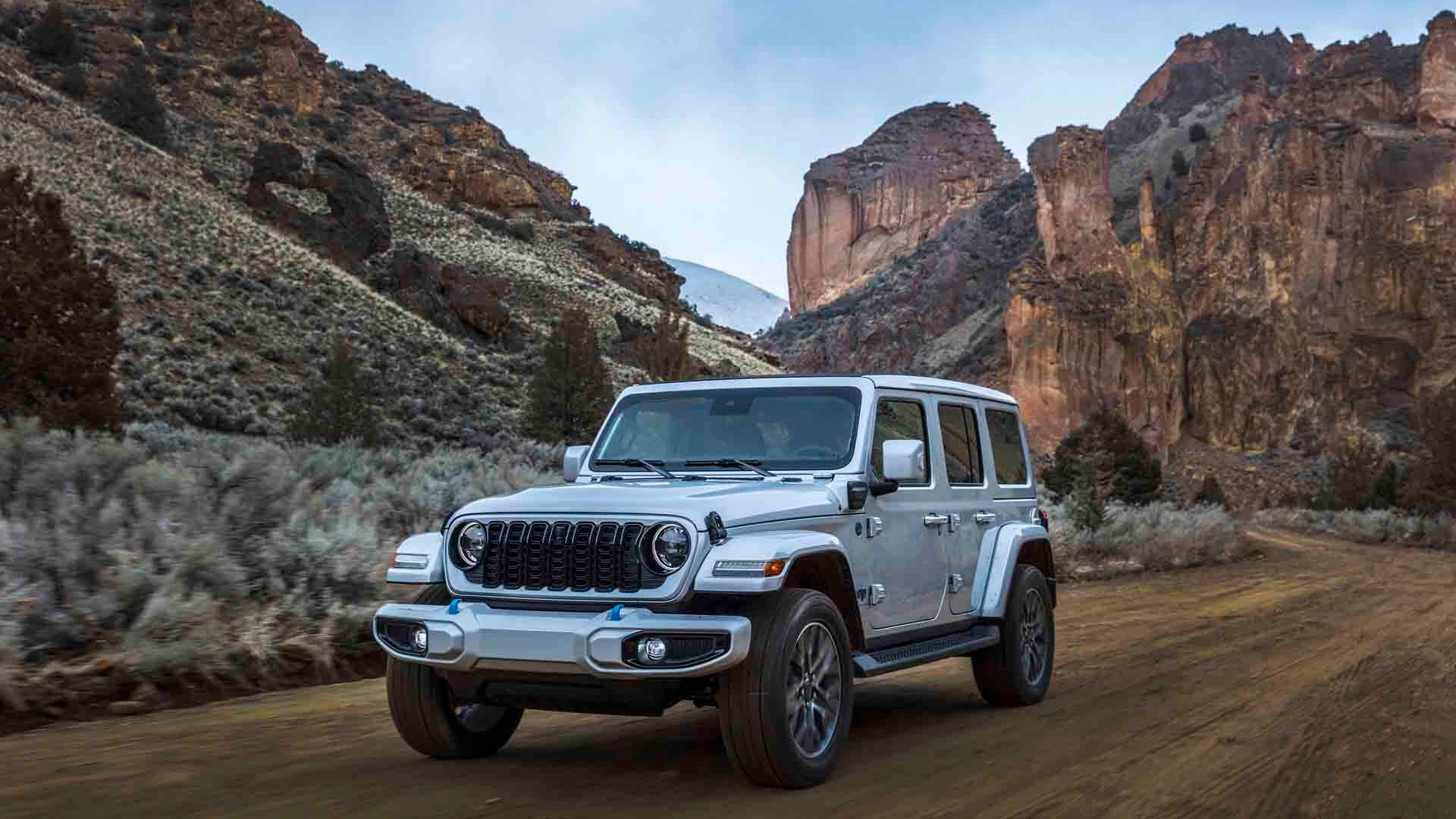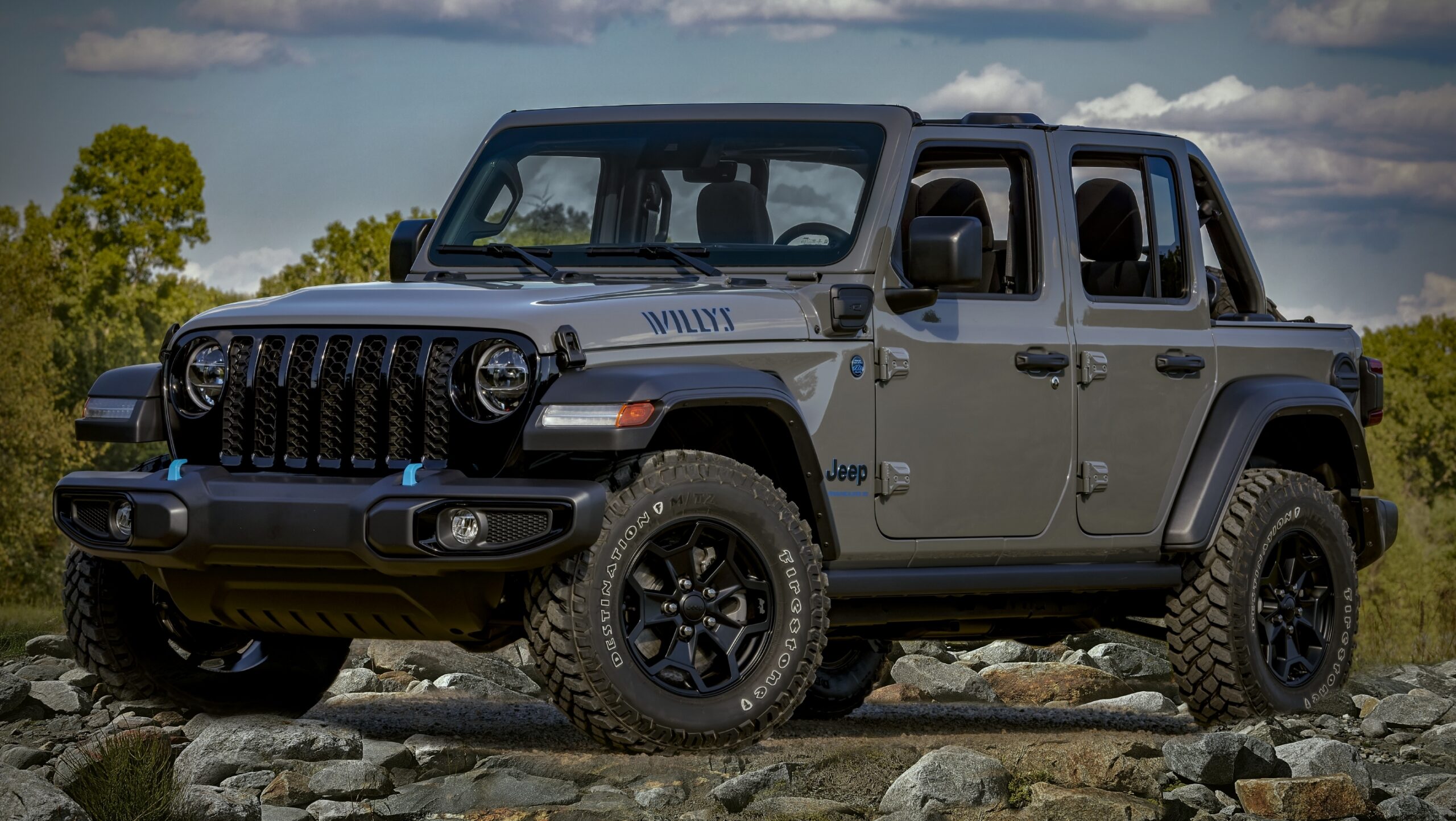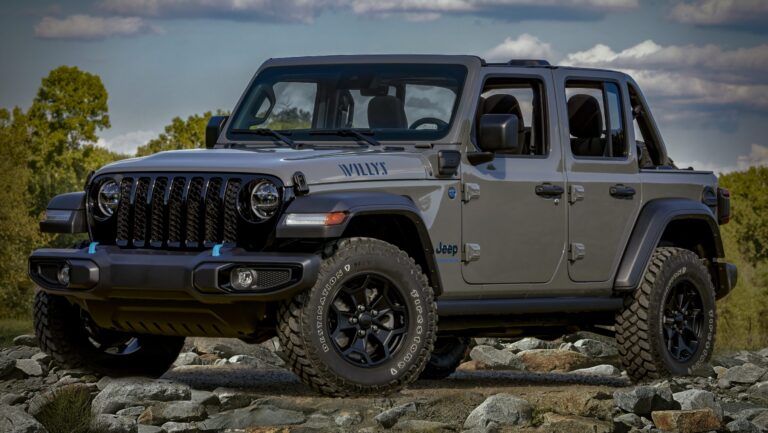The Ultimate Guide to Jeep Wrangler Kayak Racks: Unlocking Your Outdoor Adventures
The Ultimate Guide to Jeep Wrangler Kayak Racks: Unlocking Your Outdoor Adventures jeeps.truckstrend.com
For the adventurous soul, a Jeep Wrangler isn’t just a vehicle; it’s a passport to exploration. Its rugged capability and go-anywhere spirit perfectly complement outdoor pursuits. And for many Wrangler owners, those pursuits often involve the serene glide across a lake or the thrilling rush down a river in a kayak. However, transporting a kayak, especially a long and cumbersome one, isn’t always straightforward. This is where the Jeep Wrangler Kayak Rack becomes an indispensable piece of gear. More than just a simple attachment, a kayak rack is a carefully engineered system designed to safely and efficiently secure your kayak to your Wrangler, transforming your off-road beast into the ultimate water sports transport vehicle. It’s the bridge between your driveway and the next aquatic adventure, ensuring your valuable vessel arrives intact and ready for the water.
Why a Kayak Rack is Essential for Your Jeep Wrangler
The Ultimate Guide to Jeep Wrangler Kayak Racks: Unlocking Your Outdoor Adventures
Imagine the frustration of having your Jeep ready for an epic trip, only to be limited by how you’ll get your kayak there. Without a dedicated rack, you’re faced with precarious bungee cord setups, potential damage to your vehicle’s paint, or the impracticality of cramming a 12-foot boat inside. A purpose-built kayak rack for your Jeep Wrangler offers a multitude of benefits that elevate your outdoor experience:
- Safety First: Securely holding your kayak prevents it from shifting, flying off, or causing accidents during transit, especially at highway speeds or on bumpy trails.
- Vehicle Protection: It keeps the kayak from scratching or denting your Wrangler’s roof, doors, or windows.
- Convenience: Loading and unloading become significantly easier and quicker, allowing you more time on the water.
- Space Optimization: Frees up interior space for passengers, camping gear, or other essentials.
- Versatility: Many rack systems can be adapted to carry other gear like paddleboards, surfboards, or even skis with additional attachments.
- Compliance: Ensures you meet local traffic laws regarding oversized loads.
![]()
Investing in the right kayak rack is not just about carrying your boat; it’s about protecting your investment, enhancing your safety, and maximizing the utility of your adventurous Jeep Wrangler.
Types of Kayak Racks for Jeep Wranglers
The diverse world of Jeep Wranglers (from the classic YJ and TJ to the popular JK and JL, including the 2-door and 4-door variants, and hardtop/soft top configurations) necessitates a variety of kayak rack solutions. Understanding the different types is crucial for making an informed decision:
1. Roof-Mounted Kayak Racks

These are the most common and versatile options, utilizing the vehicle’s roof for transport. They typically require a base rack system (crossbars) to which the kayak carriers attach.
- Hardtop Specific Racks: These systems often bolt directly into the hardtop’s drip rails or utilize custom mounting points. They offer the most robust and stable platform. Some popular brands offer integrated rail systems that become a permanent fixture on the hardtop.
- Soft Top Compatible Racks: This is where it gets trickier. Traditional roof racks are not compatible with soft tops due to the lack of structural integrity. Solutions include:
- Gutter Mount Racks: Attach to the rain gutters (if present, common on older TJs/YJs or some aftermarket hardtops).
- Body-Mounted Racks: These systems mount to the Jeep’s frame or body (e.g., windshield frame, rear body panels) and extend over the soft top, providing a secure platform without resting on the fabric. These are often more complex to install but offer excellent stability.
- Internal Frame Racks: Some specialized racks create an internal frame within the Jeep to support external bars.
Once you have a base roof rack, you can choose the type of kayak carrier:
- J-Cradle Racks: The most popular type. They hold the kayak on its side, cradling it in a "J" shape. This allows for more kayaks (usually two) to be carried side-by-side on wider crossbars.
- Saddle Racks (or Flat Racks): The kayak rests flat on padded saddles, often with a roller at the rear to aid loading. Ideal for single, heavier kayaks, but takes up more roof width.
- Stacker Racks: Allow kayaks to be stacked vertically on their sides, secured by straps. Excellent for carrying multiple kayaks (3-4 or more) if you have a group.
- Specialized Carriers: Designed for specific kayak types like fishing kayaks (wider, heavier) or for assisted loading/unloading (e.g., slide-out or lift-assist systems).
2. Hitch-Mounted Kayak Racks (Extension Carriers)
These racks insert into your Jeep’s rear hitch receiver, extending outwards. They are excellent for longer kayaks or canoes, especially if you want to avoid roof loading.
- T-Bar/Goalpost Style: A vertical support bar extends upwards, often with a horizontal bar at the top to support the kayak’s rear. The front of the kayak still needs to be supported, usually by a roof rack or a foam block on the windshield frame.
- Dual Hitch Extenders: Some systems use two hitch receivers (one at the front, one at the rear) to support very long kayaks completely.
- Pros: Easy to load/unload, keeps the kayak lower, avoids roof height issues, no roof rack required.
- Cons: Can obstruct the rear view, limit access to the rear door/tailgate, potentially interfere with spare tire, reduces departure angle for off-roading, requires bow and stern lines to the vehicle’s front.
3. Tailgate/Spare Tire Mounted Racks (Less Common for Kayaks)
While common for bikes, dedicated kayak racks for the spare tire are rare due to the kayak’s length and weight distribution. Some small, recreational kayaks might be adaptable with creative solutions, but it’s generally not recommended for safety and stability.
Key Considerations When Choosing a Kayak Rack
Selecting the perfect kayak rack for your Jeep Wrangler involves several factors beyond just the type of rack:
- Your Jeep Model and Year:
- Hardtop vs. Soft Top: This is the most critical distinction. Hardtops offer more robust mounting points. Soft tops require body-mounted or frame-mounted solutions.
- 2-Door vs. 4-Door: Longer 4-door Wranglers (JL Unlimited, JK Unlimited) generally have more roof space for longer kayaks.
- Specific Generation (TJ, JK, JL): Mounting points and available accessories vary significantly between generations. Ensure compatibility.
- Kayak Type and Weight:
- Single vs. Tandem: Tandem kayaks are longer and heavier, requiring more robust support.
- Recreational vs. Fishing vs. Touring: Fishing kayaks are often wider and heavier, while touring kayaks are longer and narrower. Ensure the carrier’s capacity matches your kayak’s dimensions and weight.
- Number of Kayaks: If you plan to carry multiple kayaks, a stacker or J-cradle setup is usually best.
- Installation Difficulty: Some racks are simple bolt-on affairs, while others require drilling or more complex assembly. Consider your comfort level with DIY projects.
- Material and Durability: Look for racks made from high-strength steel or aluminum, with corrosion-resistant coatings. Your rack will be exposed to the elements.
- Security Features: Does the rack offer integrated locks to secure the rack to your Jeep and the kayaks to the rack?
- Budget: Kayak racks range from a couple of hundred dollars to well over a thousand for premium, feature-rich systems.
- Aerodynamics and Fuel Economy: Any rack system will increase drag and slightly impact fuel economy. Some designs are more aerodynamic than others.
- Off-Roading Considerations: If you plan to hit serious trails with your kayak on top, consider the rack’s ground clearance, stability, and potential for snagging on branches. Hitch-mounted racks can significantly reduce your departure angle.
General Installation Guide (Roof-Mounted Example)
While specific instructions vary by manufacturer, here’s a general guide for installing a roof-mounted kayak rack system on a Jeep Wrangler hardtop:
- Gather Tools: You’ll typically need wrenches, hex keys, a measuring tape, and possibly a drill if the installation requires new holes (less common for modern, vehicle-specific kits).
- Unpack and Identify Parts: Lay out all components and cross-reference them with the instruction manual.
- Install Base Towers/Mounts: Attach the rack’s towers or feet to the designated mounting points on your Wrangler’s hardtop (e.g., drip rails, factory-threaded inserts). Ensure they are secure and level.
- Attach Crossbars: Mount the crossbars to the base towers. Measure and adjust their spacing according to the manufacturer’s recommendations and your kayak’s length. Ensure they are centered and parallel.
- Install Kayak Carriers (J-Cradles, Saddles, etc.): Secure your chosen kayak carriers to the crossbars. Tighten all bolts and fasteners firmly, but do not overtighten.
- Load the Kayak:
- Two-Person Lift: With a partner, lift the kayak over your heads and gently lower it onto the carriers.
- Single-Person Slide (with rollers): If your system has rollers, lift one end of the kayak onto the rear roller, then push it forward until it’s centered.
- Secure the Kayak:
- Cam Straps: Thread cam buckle straps over the kayak and around the crossbars, pulling them tight. Ensure they are not twisted.
- Bow and Stern Lines: Crucial for stability and safety, especially with longer kayaks. Attach ropes or specialized bow/stern tie-downs from the front and rear of the kayak to sturdy points on your Jeep’s frame (e.g., tow hooks, bumper mounts). These prevent vertical and horizontal movement.
- Double-Check Everything: Before driving, give the kayak and rack a good shake. Ensure all straps are tight, all fasteners are secure, and there’s no excessive wobble.
Tips for Safe Kayak Transport
- Weight Distribution: Center the kayak on the rack as much as possible to distribute weight evenly.
- Bow and Stern Lines are Non-Negotiable: Always use front and rear tie-downs. They prevent uplift at highway speeds and keep the kayak from shifting during braking or turns.
- Tighten Straps, But Don’t Over-Tighten: You want the kayak snug, not crushed. Over-tightening can damage the kayak or the rack.
- Check Straps Regularly: Stop after a short drive (10-15 miles) and re-check all straps. They can loosen due to wind or vibration. Repeat checks during long trips.
- Mind Your Clearance: Remember your Jeep is now taller and wider. Be mindful of low overheads (garages, drive-thrus, bridges) and tight parking spaces.
- Drive Conservatively: Avoid sudden braking, sharp turns, or high speeds. Crosswinds can also affect stability.
- Protect Your Kayak: Use padding between the kayak and the rack, especially at pressure points, to prevent chafing or dents.
Potential Challenges and Solutions
- Soft Top Compatibility: As discussed, this is the biggest challenge. Solution: Invest in body-mounted or frame-mounted rack systems that bypass the soft top entirely. Brands like Rhino-Rack, Smittybilt, and TeraFlex offer solutions for this.
- Hardtop Removal: If you use a hardtop-specific rack, removing the hardtop (and thus the rack) for open-air driving can be a hassle. Solution: Some racks are designed for quick removal, or you might consider a separate hitch-mounted system for specific trips.
- Wind Noise/Drag: All roof racks generate some noise and drag. Solution: Choose aerodynamic crossbars, use fairings (wind deflectors), and remove the rack when not in use.
- Loading Difficulty: Taller Wranglers can make loading heavy kayaks challenging. Solution: Use load-assist accessories (rollers, extendable arms), or opt for a hitch-mounted system if feasible.
- Security: Kayaks and racks are attractive targets for theft. Solution: Use locking rack systems and cable locks for your kayaks.
Jeep Wrangler Kayak Rack Price Guide
Please note: Prices are estimates and can vary significantly based on brand, materials, features, and retailer. Installation costs (if professional) are not included.
| Rack Type | Key Features | Typical Price Range (USD) | Pros | Cons |
|---|---|---|---|---|
| Roof Rack Base System | Crossbars, Towers, Vehicle-Specific Mounts (Hardtop/Body Mount) | $300 – $800+ | Foundation for all roof carriers, versatile | Can be complex to install, adds height/drag |
| J-Cradle Carrier | Holds kayak on side, padded, often comes in pairs, fits most crossbars | $100 – $250 | Space-efficient (can carry 2+ kayaks), secure | Kayak sits higher, requires lifting kayak onto side |
| Saddle Carrier | Kayak rests flat on padded saddles, often with rear roller, fits crossbars | $150 – $350 | Easy loading (with rollers), stable for single kayak | Takes up full crossbar width (limits multiple kayaks) |
| Stacker Carrier | Vertical posts for stacking multiple kayaks on their sides | $80 – $200 | Maximizes capacity (3-4+ kayaks) | Requires good strapping technique, kayaks sit very high |
| Hitch Extender (T-Bar) | Inserts into hitch receiver, provides rear support for long kayaks | $150 – $400 | Easy to load/unload, avoids roof height issues | Obstructs rear view, limits tailgate access, reduces departure angle |
| Specialized/Assisted | Lift-assist mechanisms, slide-out systems, specific fishing kayak carriers | $400 – $1000+ | Easiest loading, ideal for heavy kayaks | Most expensive, heavier, more complex |
| Soft Top Body-Mount | Frame-mounted system that goes over soft top (e.g., Kargo Master, GOBI) | $800 – $1500+ | Fully compatible with soft top, very robust | High cost, complex/permanent installation, heavy |
Frequently Asked Questions (FAQ)
Q1: Can I put a kayak rack on my Jeep Wrangler with a soft top?
A1: Yes, but you cannot mount directly to the soft top. You need a body-mounted or frame-mounted rack system that extends over the soft top without resting on it. These systems are typically more involved to install but provide excellent stability.
Q2: Do I need crossbars for a kayak rack?
A2: For most roof-mounted kayak carriers (J-cradles, saddles, stackers), yes, you will need a base roof rack system that includes crossbars. Some hitch-mounted systems do not require crossbars.
Q3: How many kayaks can a Jeep Wrangler carry?
A3: This depends on the rack type and crossbar width. With J-cradles, you can typically carry two kayaks. With stacker racks, you can often carry 3-4 kayaks or more, depending on their width and your crossbar length.
Q4: Will a kayak rack damage my Jeep Wrangler?
A4: If installed correctly and used properly, a quality kayak rack should not damage your Jeep. Ensure all mounting points are secure, and use padding to protect your paint if there’s any contact.
Q5: Does a kayak rack affect fuel economy?
A5: Yes, any roof-mounted rack and the kayak itself will increase aerodynamic drag, leading to a slight decrease in fuel economy. This effect is more pronounced at higher speeds. Removing the rack when not in use can help.
Q6: Is it difficult to install a kayak rack on a Jeep Wrangler?
A6: Installation difficulty varies. Basic crossbar systems and hitch extenders are relatively straightforward. Body-mounted or integrated hardtop systems can be more complex and may require more tools or even professional installation. Always follow the manufacturer’s instructions.
Q7: Can I take my Jeep Wrangler off-roading with a kayak on the rack?
A7: It’s generally not recommended for serious off-roading due to the increased height, weight, and potential for snagging branches. For light trails, ensure the kayak is extremely secure and be mindful of your overhead and ground clearance. Hitch-mounted racks can impact departure angles.
Conclusion
The Jeep Wrangler Kayak Rack is more than just an accessory; it’s an essential enabler of adventure for any Wrangler owner who loves to paddle. By providing a safe, secure, and convenient way to transport your kayak, it transforms your already capable vehicle into the ultimate adventure machine, ready to conquer both land and water. From understanding the diverse types of racks available to considering the nuances of your specific Jeep model and the type of kayaking you do, making an informed decision is key. With the right rack, proper installation, and adherence to safety guidelines, you can confidently hit the road, knowing your kayak is along for the ride, ready for your next aquatic escape. Embrace the freedom, embrace the water, and let your Jeep Wrangler be your reliable partner in every paddling expedition.





